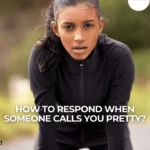In a world where humor often straddles the line between playful fun and biting insult, few things are as effective as a good roast.
Whether it’s among friends or as part of a comedy routine, good roasts that hurt are often the ones that sting the most—but in a way that everyone can laugh at.
There’s a skill to delivering a roast that is sharp enough to leave a mark but still maintains the spirit of fun. Think of it as a paradox: it’s painful, but in the best way possible.
A roast is not just about throwing insults or making someone feel bad—it’s about wit, timing, and understanding your audience.
It’s the fine art of delivering a comment that might hurt, but also leaves everyone laughing. In this article, we’ll explore some of the best roasts that hit hard, the psychology behind them, and how to craft your own roasts that can sting without crossing the line into meanness.
Contents
Understanding What Makes a Roast Effective
A roast is a form of humor that has been popularized by shows like Comedy Central Roasts, where comedians and celebrities alike come together to poke fun at each other in a playful but sharp manner.
The key to a good roast is finding the right balance between being insulting and funny. A good roast should be just the right amount of hurtful—enough to make someone squirm, but not enough to cross into malicious territory.
What makes a roast truly effective is its relatability.
The best roasts often come from a place of truth or exaggerate something familiar about a person—whether it’s their appearance, personality, or habits. A good roast taps into something personal but not deeply hurtful, leaving the person being roasted laughing along with the crowd.
The Psychology Behind a Good Roast
What is it about roasts that hurt yet make us laugh? At its core, a good roast plays on self-deprecating humor and can even help strengthen relationships.
When done right, roasts build trust—especially when they come from someone who knows you well enough to make fun of your quirks without being cruel.
Psychologically, the sting of a roast triggers a cognitive dissonance, where the listener feels conflicted—there’s the initial sting of the insult, followed by the laughter that comes from understanding it was all in good fun.
This form of humor releases endorphins—the brain’s feel-good chemicals—making us feel lighter, despite the sharpness of the words.
The timing of a roast also plays a crucial role. A well-timed roast can hit harder and leave a more lasting impression than one delivered too early or too late. The surprise factor is part of the equation, and it’s what often makes roasts so memorable.
Classic Roasts That Hurt and Why They Work
Some of the best roasts come from classic examples—roasts that have been passed down for generations or that have gained popularity thanks to comedians and television shows.
These roasts work because they capitalize on universally recognized traits or experiences. Here are some of the most iconic roasts that still sting today:
- “You have the perfect face for radio.”
This roast works because it targets something personal (someone’s appearance) but frames it in a humorous, exaggerative way. It’s not about appearance, but about implying a lack of appeal in an absurd manner. - “You bring everyone so much joy when you leave the room.”
This one works because it’s delivered in a backhanded compliment style. It’s a “compliment” that cuts deep because it implies that the person is a source of frustration or annoyance. - “If I had a face like yours, I’d sue my parents.”
Harsh, but effective, this roast takes a cheap shot at someone’s looks, and the exaggerated nature of the insult makes it humorous rather than truly hurtful.
These types of roasts work because they focus on universally relatable insecurities or exaggerate faults in a way that everyone can laugh at, without crossing the line into true cruelty.
How to Craft Your Own Roasts That Hit Hard
Writing your own roasts that hurt without being overly mean can be an art form. To craft a perfect roast, start by identifying traits or habits of the person you’re roasting—these could be physical features, quirky behaviors, or even common mistakes they make.
The goal is to make the roast personal but not insulting.
Here are a few tips to make your roasts hit the mark:
- Know your audience: Tailor your roast to the person and the situation. A roast that works with your friends might not land as well in a formal setting.
- Be clever, not cruel: The best roasts are witty and well-thought-out. Instead of just going for an obvious insult, dig a little deeper.
- Exaggerate, don’t accuse: A good roast often blows things out of proportion, turning small quirks into big, funny exaggerations.
- Timing is everything: If you’re telling a roast in person, wait for the right moment. A joke told at the wrong time can fall flat, or worse, hurt someone’s feelings.
When done right, the humor in a roast can help bond you with others, but it’s important to stay respectful and not cross the line into harmful territory.
The Fine Line: When Roasts Go Too Far

While roasts can be fun, it’s important to recognize when a joke has gone too far. A good roast should never humiliate or cause serious emotional pain.
There’s a very fine line between humor and cruelty, and the last thing you want to do is hurt someone in a way that can damage the relationship.
If a roast involves deep insecurities or crosses into personal territory—such as mocking someone’s past trauma, mental health, or serious physical appearance—then it’s no longer funny.
The key is to stay lighthearted and ensure that everyone, including the person being roasted, is enjoying the joke.
Conclusion:
A good roast that hurts is an interesting paradox—it’s a form of humor that stings but ultimately strengthens the bond between friends.
By targeting universal insecurities and exaggerating them with wit and creativity, you can deliver a joke that’s sharp without being mean. The challenge is in finding that sweet spot where the roast hurts just enough to make everyone laugh but doesn’t cross the line into cruelty.
In the end, the best roasts are those that leave everyone in stitches, with no hard feelings—just a moment of shared humor that makes the relationship even stronger.
FAQ’s
What makes a roast good?
A good roast is clever, witty, and personal. It should exaggerate a trait or behavior in a humorous way, without being cruel.
Is it okay to roast someone about their appearance?
It’s okay to roast someone’s appearance if done in a lighthearted and exaggerated manner, but it should never target deep insecurities.
How can I roast a friend without being mean?
Focus on shared jokes or quirks that you both find funny. Keep it playful and avoid targeting sensitive areas.
What’s the difference between a roast and an insult?
A roast is meant to be humorous and lighthearted, while an insult is intended to hurt or demean someone.
Are roasts ever appropriate in professional settings?
Roasts are usually more appropriate in informal settings with close friends. In professional environments, it’s better to avoid anything too personal or potentially hurtful.
Can a roast backfire?
Yes, if it crosses the line into cruelty or touches on a sensitive topic. Always gauge the mood and know your audience.








